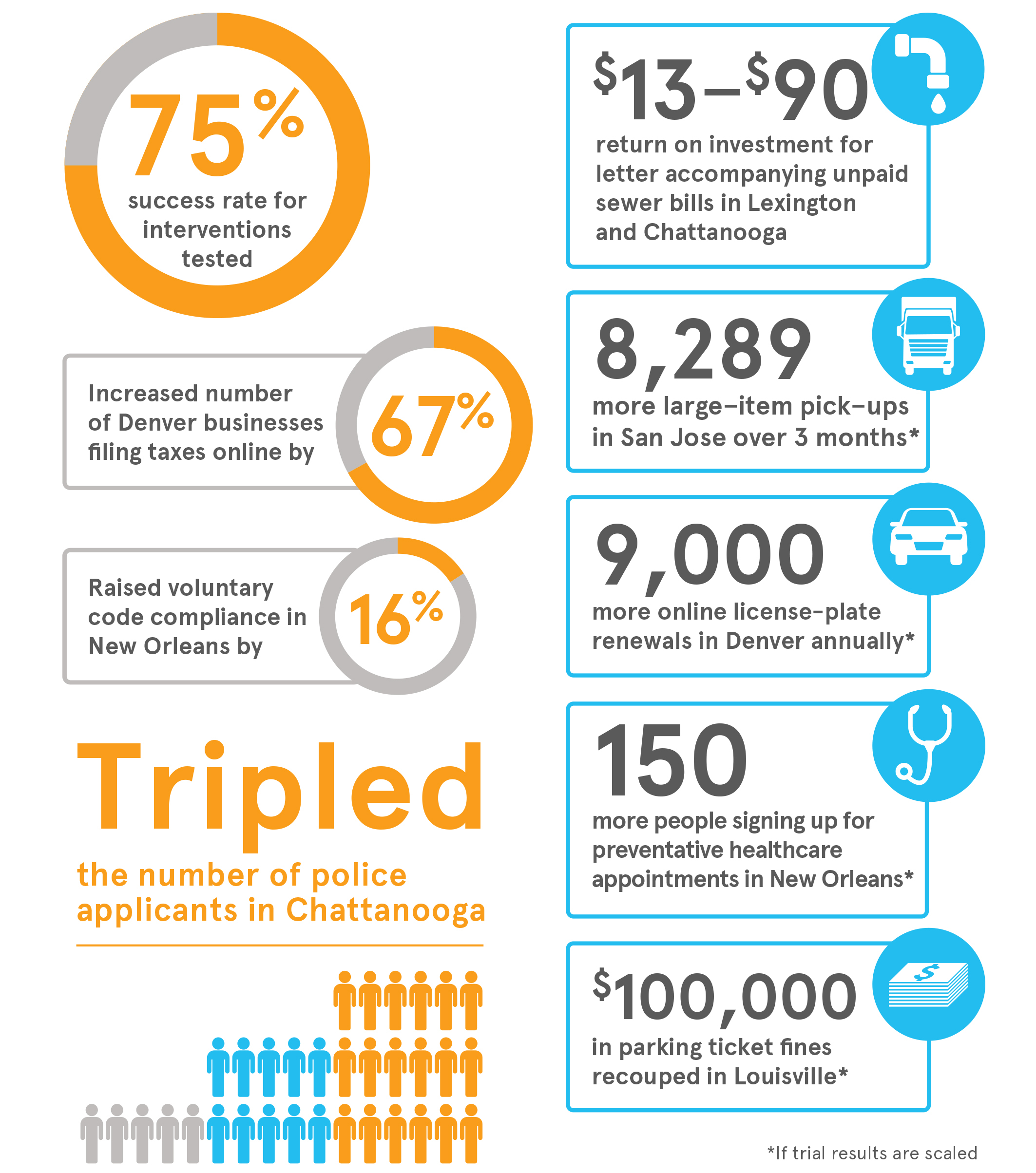From ancient Athens to modern New York, cities have long provided crucibles for human interaction, thriving and faltering in equal measure on the density and diversity of the lives within them.
With 2 out of every 3 of us set to live in cities by 2050, it is hardly surprising that we find ample opportunities for applying behavioral insights in these environments; from the commuter sitting in traffic to the police officer patrolling the streets, individuals across the city stand to gain from civic design that takes account of the things we know about judgement, decision-making, and the importance of context.
Today BIT North America launches its first report; a practical guide to the application of behavioral science in US cities. The report fits into a wider movement to bring data and evidence to the fore in city administrations. Its pages summarize over twenty randomized control trials (RCTs) conducted as part of Bloomberg Philanthropies’ What Works Cities initiative; a $42 million investment to cement the use of data and evidence in America’s midsize cities. We focus on three themes, exploring how this approach can:
- encourage people to use public services;
- make government requests of residents as effective as possible;
- and build a stronger municipal workforce.
In parallel with the report, we have also officially launched an online toolkit for city officials who want to run their own randomized control trials (RCTs).
Some highlights from BIT’s first year of US projects are shown below:
To pull out just one result, BIT worked with the Chattanooga, TN, Police Department to try and attract more applicants, notably those from under-represented demographic groups. By sending four different variations of a postcard to households across the city, we found that messages emphasizing the challenge of being an officer and those that focused on career benefits tripled the number of applicants to the police force relative to the control. Postcards that asked the recipient if they were “ready to serve”, on the other hand, were no more effective than not sending a postcard at all. Most encouragingly, the challenge and career messages were particularly effective in getting people of color and women to apply; a policy issue that police forces across the country are working hard to tackle.
We hope you enjoy the full report, which you can read here, and we’d love to hear from you on Twitter via @B_I_Tweets with #WhatWorksCities.
To learn more about what BIT North America is doing, contact Elspeth Kirkman at Elspeth.kirkman@behavioralinsightsteam.com


